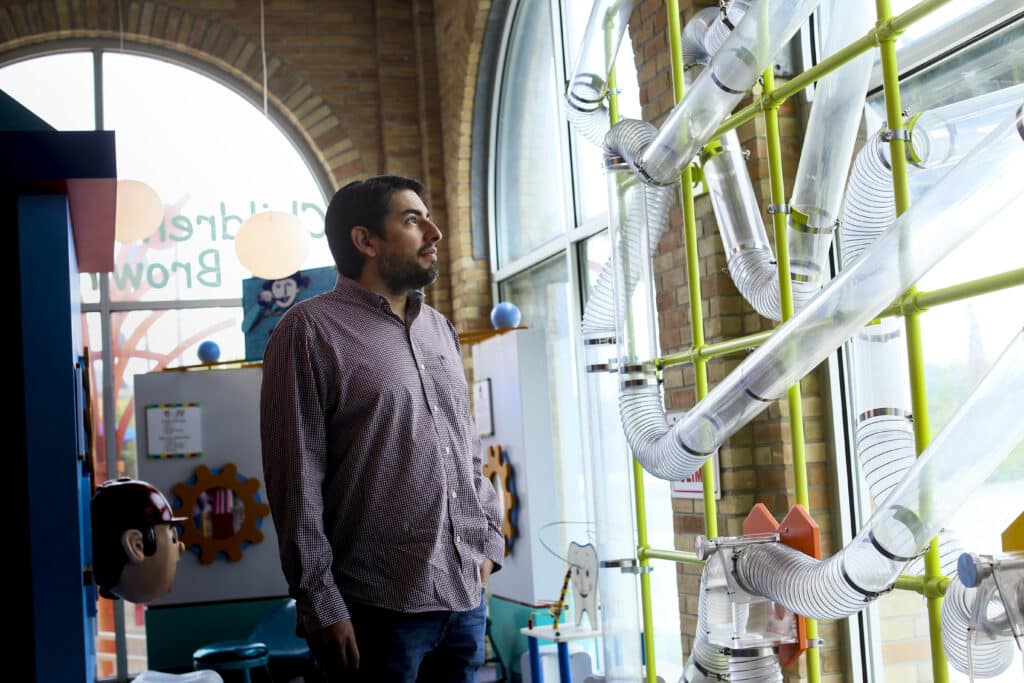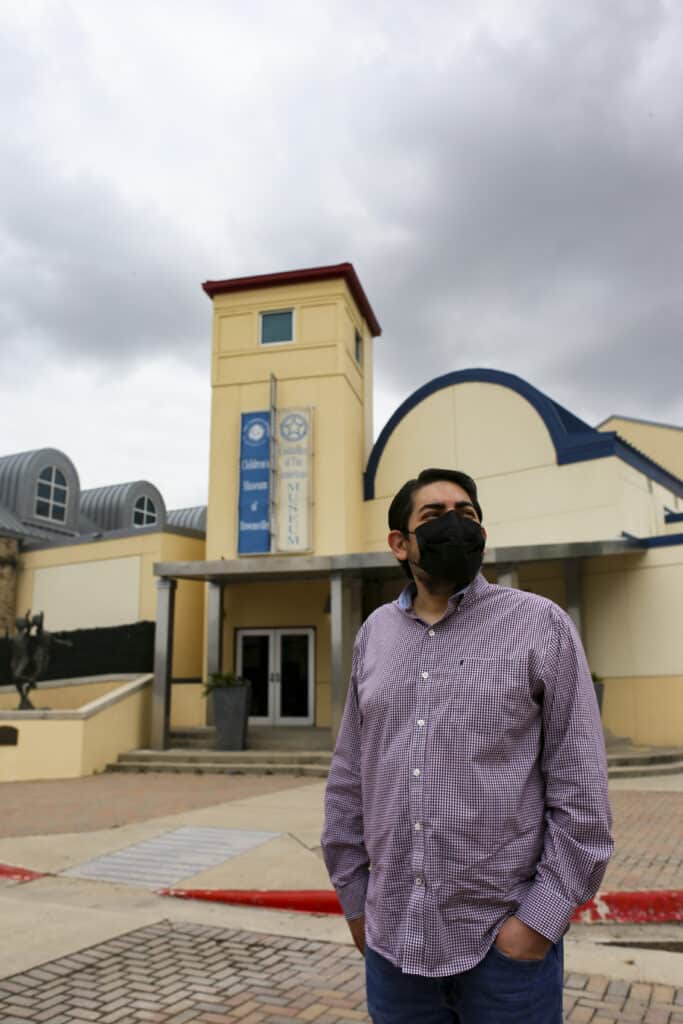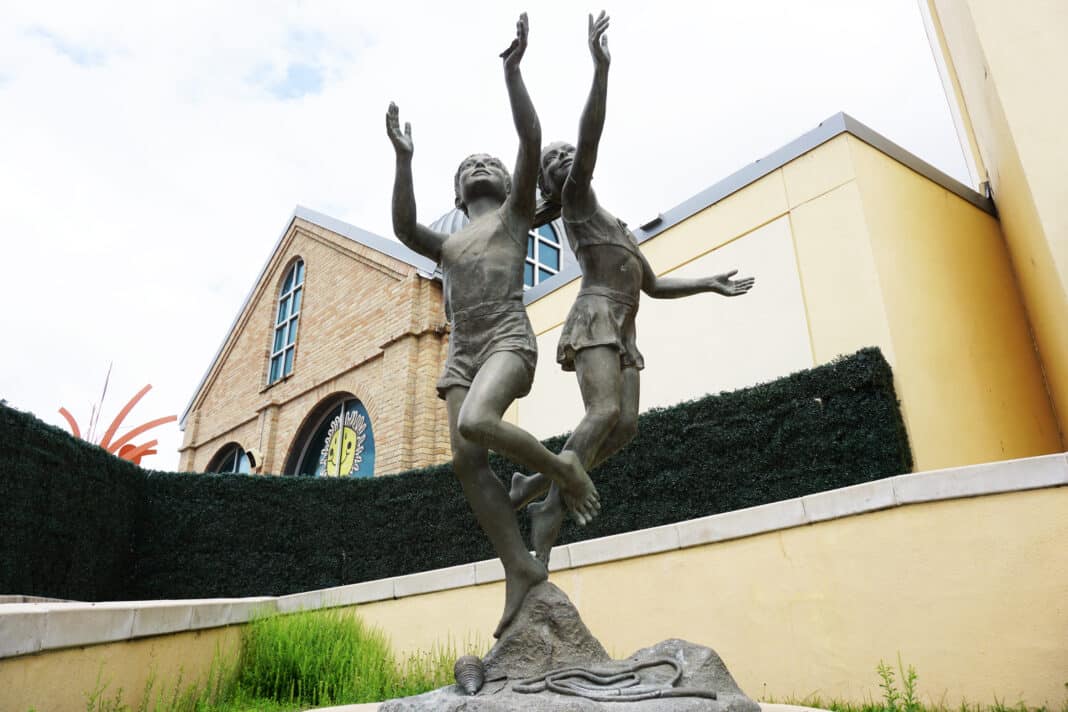The COVID-19 pandemic forced some hard decisions on the Children’s Museum of Brownsville, decisions that were necessary to keep the institution afloat.
Felipe Peña III, the museum’s executive director for the last eight years, said the museum had grown to a team of 35 through its expansion of external programming in the community — schools, fairs, festivals and such — but when the pandemic hit in mid-March 2020 about 25 of those employees had to be let go. Most of the affected were part-time staff, and the museum helped them navigate the process of signing up for unemployment benefits, he said.
“The operation just shut down,” Peña said. “In a matter of a few weeks we had to make some really tough decisions, because obviously the expenses were still there but we weren’t having any income come in.”
Visitor revenue during spring break is typically what sustains the museum through the year, while fall is usually slow. The annual Night at the Museum fundraiser is held that time of year to help maintain stability throughout the year. Last year not only did the museum lose spring break, it lost the summer peak as well.
Peña and the board of directors had to move fast to shrink the organization as much as possible to “to keep it afloat and maximize remaining reserves,” he said, noting that the emergency maneuvers kept the red ink to a minimum.
“It was a negative year for us financially but it wasn’t as bad as it could have been,” he said.
It helped that turnout for Night at the Museum 2020 was among the best ever, Peña said.
“The community really helped rally around us,” he said. “That made it possible to stay afloat.”

This spring break saw a healthy crop of visitors as well, Peña said. The museum began admitting guests again in October, though with strict precautions, which visitors have been good about observing, he said. Today the organization is in rebuilding mode, with major developments on the horizon.
“Now that things are kind of ramping back up and we have visitors, we’re building ourselves back up slowly and trying to make it through to be what we were before,” Peña said.
Restarting external programming is essential, though it will have to wait a bit while the museum concentrates on expanding internally, he said. The institution, which has always been squeezed for space, will soon expand into the Ringgold Pavilion in Dean Porter Park, which in conjunction with its current space will allow for some serious breathing room, Peña said.

While the museum’s current iteration caters to children up to 8 years old, the new one will target kids up to age 10, he said. The goal is to have the new space operable by summer, Peña said.
“We’re talking about finally becoming the proper size museum for our community,” he said. “We’re looking forward to serving the community in-house the right way. We could have multiple field trips at the same time. We could have other programs that help those in need, like Museums for All, which we were never able to do before.”
Museums for All provides free or reduced admission to affiliated museums around the United States for those who receive food assistance through the federal Supplemental Nutrition Assistance Program. Peña said the additional space will also allow for more classroom space and bigger multipurpose rooms.
“Even our birthday parties can be larger,” he said.
Master planning for the Mitte Cultural District envisions an additional aspect of the children’s museum: a science center, to be located in the former Copy Systems building — or “la copiadora” as Peña has always known it — at 1859 E. 7th St. The Austin-based Mitte Foundation purchased the property and the adjacent Jackson Feed & Seed building, which has been demolished, in 2018. As it stands now the science center, which would focus on science, technology, engineering and math (STEM) subjects, would be part of the Children’s Museum.
“Most children’s museums, especially new ones that are being built, like El Paso, they’ve already incorporated it, so the children’s museum and the science center are sort of in one building,” Peña said. “We’re going a little bit more with the campus approach. The science center will be in a different place — not too far, obviously. It’s right at the entrance to the district. It’ll be part of the children’s museum and vice versa. The idea there is that we’ll be growing with the child.”
The foundation has tasked the museum with figuring out how to use the old Copy Systems space, and the museum has brought on a couple of partners to help in that effort: the South Texas Astronomical Society, and University of Texas Rio Grande Valley physics and Astronomy Professor Mario Diaz, director of UTRGV’s Center for Gravitational Wave Astronomy.
They have much to offer in terms of space science programming and expertise, Peña said, adding that he’d like to bring in SpaceX, NASA and the National Informal STEM Education Network as well. The museum is working with the Harlingen architecture firm Megamorphosis Design, he said. The old building currently has no plumbing, HVAC or adequate electrical infrastructure, though Peña thinks it could be transformed into a state-of-the-art science center, even if it’s not something that’s going to happen right away, he said.
“It’ll be a long road to the science center,” Peña said. “We think it could be a refurb. It’s got good bones. We’ll figure it out. We’ll figure out what it’s going to take.”




